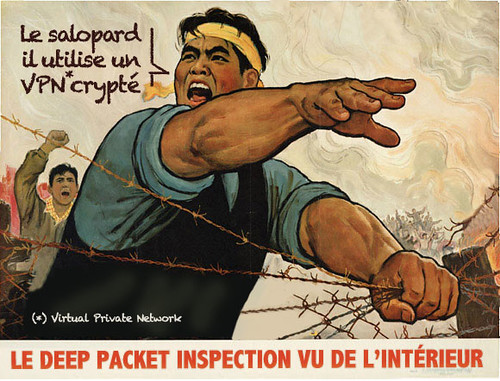By
YOUNG | Published:
APRIL 1, 2011
How many ways have you used to unblocked the internet censorship and
get access to Facebook, Twitter, YouTube and some other sites blocked in your country or area?
I have used a ton, such as Proxy, SSH, VPN and many other anti-censorship tools, since which may be blocked, too, the more you have, the safer you will be.
The following are 100+ free tools for you to access blocked sites:

The main advantage of online proxy websites (or web proxies) is that you don't need to install anything nor to make any configuration, just to look out those pop-up ads.
1. Aniscartujo.com
The Aniscartujo web proxy is workable for both computers and mobile phones.
2. Free Web Proxy
This web proxy allows you to watch YouTube videos as well as to download them in MP4 files.
3. Daveproxy
A UK web proxy which supports JavaScript well.
4. TryCatchMe
The effect of TryCatchMe is nearly same as Daveproxy.
5. Surfagain.com
Surfagain.com is available for you to watch YouTube videos.
6. Online Sonic
Online Sonic will translate the languages of the target websites into French.
7. Megaproxy
The Magaproxy free version is free of pop-up ads.
8. Shield Proxy
This web proxy is very simple with just an address box in its homepage.
9. Psiphon 2
Psiphon 2 is also a web-based proxy service, but you need to be invited and register, and the website URLs are often changed.
10. Glype
Glype is available for you to create your own online proxy website, just by uploading its script to your server.
11. Circumventor
On the website, you will get one URL of a web proxy, if which is blocked, you can subscribe to its lists for more.
12-47. CamoList.com
The owner of the CamoList.com website offers more than 30 online web proxy tools:
- artclassdrama.com
- browse007.com
- browse007.info
- camo1.info
- classwork101.com
- coolkidsonly.org
- ditchthetests.com
- downwithitall.com
- dumbdream.com
- enoughschool.com
- erasermaker.com
- forgotmybooks.com
- getus.in
- goodgradesforme.com
- gumunderthedesk.com
- gymtimestories.com
- hiddentunnel.net
- hidemy.biz
- letmethruthis.com
- nobodycanstop.us
- noclasswork.com
- noneedhallpass.com
- nowaytoknow.com
- plzhidemy.info
- rebelbrowse.com
- schoolisgood.com
- showsomewisdom.com
- slaptheblock.com
- sneakmyass.in
- starscantshine.com
- studybreakneeded.com
- studyhardplayharder.com
- theunblocked.com
- tothedeans.com
- tunnel007.com
- wecantfocus.com
48-65. Polysolve.com
The Polysolve.com website offers 18 links of web proxy tools (including itself):
- Atunnel.com
- Backfox.com
- Btunnel.com
- Calculatepie.com
- Ctunnel.com
- Dtunnel.com
- Englishtunnel.com
- Geotunnel.com
- Mathtunnel.com
- Newbackdoor.com
- Polysolve.com
- SafeForWork.net
- Safehazard.com
- Safelizard.com
- USAtunnel.com
- Vmathpie.com
- VPNTunnel.net
- Vtunnel.com
66. Proxy.org (100+)
There are over 100 workable web proxy tools on the Proxy.org website.
There are less or even no ads for proxy desktop clients, though you need to download and install them:
- Freegate(For Windows, Windows Mobile and some Java mobiles)
- FreeU (Similar to Freegate and offered by the same website)
- DanyPass (Similar to Freegate and offered by the same website)
- UltraSurf (For Windows)
- GTunnel (For Windows)
- Tor (For Windows, Mac, Linux, Android and Nokia)
- GappProxy(For Windows and Linux)
- Hyk-proxy (For Windows, Linux and Mac)
- Your Freedom (For Windows and Mac)
- GPass (For Windows)
- HTTP-Tunnel (For Windows)
Bonus:
When using any of the above 11 proxy desktop clients, you need to configure the browser’s proxy settings, which process can be more easier with the following two extensions:

III. VPN (13)
While proxy is only workable for the application with network configuration, VPN (Virtual Private Network) is workable for all the programs run in your computers, tablets, or mobile phones.
a. Free VPN services without any installation (6)
Most VPN services without installation are workable for computers, mobile phones and tablet PCs in any operation system.
b. Free VPN desktop clients (7)
VPN desktop clients are mainly workable for computer systems.
IV. SSH (3)
As mentioned
before, free SSH is not stable, but you can also try the following 3 anyway:
- Feelssh.com(Chinese)
- Freessh.us (Chinese)
- Alidage.org (Chinese, email address required)
Bonus:
To use SSH, you’ll need some assistant tools, such as
Tunnelier for Windows, and
SSH Tunnel Manager for Mac.
V. Browsers (3)
The best browsers are available for you to access blocked sites.
a. For computer (1)
While Firefox, Chrome, IE and other popular browsers can’t unblock the censorship themselves,
Alkasir can.
b. For Mobile Phones (2)
Although there are not so many anti-censorship tools for mobile phones, besides some VPN services and web proxies, you can also check out the following two mobile browsers:
But the above two mobile browsers are both blocked in China.
VI. IPv6 (1)
If your broadband supports
IPv6 access, then you can visit those IPv6 sites directly, if not, you can do that indirectly with some third-party tools, such as
gogoCLIENT.
After registration and installation, you can connect Gogo6 and access Google, Twitter, YouTube and some other
blocked websites with IPv6 addresses by the following 3 ways:
1. To add
.sixxs.org in the end of their domains, like
Google.com.sixxs.org for example.
2. To configure an automatic proxy URL in your browser.
3. To edit the
hosts file by adding the IPv6 addresses of those blocked sites. For Windows user, you can find the hosts file in the following address:
C:\WINDOWS\system32\drivers\etc
And you can find out some IPv6 addresses of Google, YouTube, Twitter as well as some other popular blocked sites
here (Chinese).
Bonus:
Without IPv6 access, you can also add those unblocked IPv4 addresses of the blocked sites in the hosts file and save it, than you can visit the website directly without any anti-censorship tools. For the IPv4 addresses of a domain, you can find them with
OpenDNS.
VII. Others (3)
All the tools mentioned above are available for you to unblock the censorship directly, and you can also get access to those blocked sites indirectly with the following 3 ways:
98. Google Cache
You can visit the cache of the blocked sites if they displays in Google search result pages.
99. Google Translate
With Google Translate, you just need type the URL of the blocked site, and select a language, then you can view the blocked site in the translated language.
100. Google Reader
Most of the sites offer RSS feeds, which you can subscribe and read them with your Google Reader.
For more information about the above 3 tools, you can check out
this post.
Bonus
Among the above 100+ anti-censorship tools, it’s hard to say which one is the best, since you have no idea when them are blocked, so you’d better
bookmarkthem all.
Related free web apps:
- Book Giveaway: 100+ Free Tools For You To Access Blocked Sites
- How To Access Blocked Sites
- Access Blocked Sites With Private Tunnel
- How To Access Blocked Sites With Google Reader
- Unblock Blocked Sites By Changing The Hosts File
 Well, in the beginning it was because the phrase was more search-engine friendly. It had lower competition than the alternatives; as a result, it ranked higher in search engines.
Well, in the beginning it was because the phrase was more search-engine friendly. It had lower competition than the alternatives; as a result, it ranked higher in search engines.

 To be honest though, I don’t know much about health. That’s why I rarely write about it. But I’d like to learn more about it and I believe you should too. Doing that will only do you good.
To be honest though, I don’t know much about health. That’s why I rarely write about it. But I’d like to learn more about it and I believe you should too. Doing that will only do you good. I recently read a book titled
I recently read a book titled  That was the case when I read
That was the case when I read 
 Here I’d like to discuss several ways to build them. Of course, what I’m about to cover is not exhaustive; you are welcome to recommend more ways in the comments. But I hope these can give you a starting point.
Here I’d like to discuss several ways to build them. Of course, what I’m about to cover is not exhaustive; you are welcome to recommend more ways in the comments. But I hope these can give you a starting point.
 The hearing capacity of each and every one of us can be damaged in many ways – from low and high pressure when swimming and diving to smoking to loud noises. All it takes for us to care of our bodies is to try and hope for the best, but overdoing everything will definitely bring harm to our own organism, even eating vitamins. What about the cigarette?
The hearing capacity of each and every one of us can be damaged in many ways – from low and high pressure when swimming and diving to smoking to loud noises. All it takes for us to care of our bodies is to try and hope for the best, but overdoing everything will definitely bring harm to our own organism, even eating vitamins. What about the cigarette?
 Many people invest in financial instruments. I do, and most likely you do too. It’s common to think like an investor when it comes to money. But that’s not the case with time. I believe, however, that the principle of investing is equally applicable to time.
Many people invest in financial instruments. I do, and most likely you do too. It’s common to think like an investor when it comes to money. But that’s not the case with time. I believe, however, that the principle of investing is equally applicable to time.
